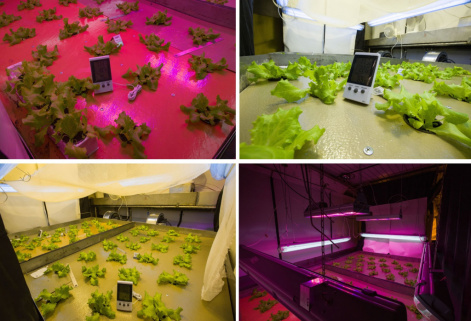Krasnoyarsk scientists: there is no equally efficient artificial light source for all plants
30 January 2020 г.

Artificial lighting when growing plants is used in industrial greenhouses, breeding centers, where the most promising varieties are selected, as well as in the life support systems for terrestrial and space purposes. For the plants to feel good and have high yields in artificially created conditions, it is important to choose and provide conditions which are favorable for their growth and productivity. Of paramount importance for the existence of plants under controlled artificial conditions is light.
Scientists of the Federal Research Center “Krasnoyarsk Scientific Center” SB RAS came to a conclusion that there is no lamp radiation which the most effective in spectral and energy characteristics for all plants. In order to choose a suitable light source, it is necessary to take into account certain factors affecting the plant growth. These include the characteristics of the spectrum and radiation intensity of the lamp, type of the plants grown, their response to the spectral composition of the lamps and other non-obvious conditions.
The light absorbed by plants affects their growth, and biomass synthesis, and regulates their behavior. For example, the presence of light or the amount of daylight hours is important for the beginning of flowering and blooming, opening of petals or orientation of leaves towards light. Special complex photoreceptor molecules are responsible for the receipt of and response to light signals, converting the energy of light into a chemical process. They respond only to light with a wavelength in a certain range, appropriate for them: blue, red, ultraviolet spectral ranges etc.
It is believed that white light, representing an average radiation spectrum, can be used for all plants. But in this case, one should be ready for some crop losses. Different plants need different amounts of light in different wavelength ranges. Therefore, the most effective light source for all plants does not exist. In order to grow a large crop in minimum time, it is important to choose the correct spectral composition and intensity of the radiation source.
One of the factors to be taken into account when choosing light is the infrared range of radiation, as it is the range which affects plant productivity.
Scientists suggest that the temperature of leaves should depend on this radiation, which affects the production of useful products, increasing the rate of biochemical processes in the leaves. Therefore, with a single emission spectrum, but different proportion of thermal radiation, the amount of products obtained may vary.
The sun, strange as it may seem, may “interfere” with the optimal growth of plants in the case of artificial lighting. Natural light entering the greenhouse in the daytime can “blur” the emission spectrum of the lamps, reducing their efficiency. This factor must be taken into account when choosing lamps for illumination in greenhouses in the middle and especially more southern latitudes, where the number of sunny days is large.
In areas where there is insufficient sunlight, or it may be absent for a long time due to the period of rains, large cloud cover and other factors, it is necessary to use LED irradiators with a high dominance of blue and red as supplementary lighting to natural white light. This approach will be most effective when growing plants in greenhouses in winter.
An important point which crucially affects the choice of the spectrum of lamps is the plant structure and its photosynthetic organs, i.e. the cells involved in photosynthesis. For example, it is necessary to take into consideration which leaves are responsible for the crop formation, and thus, choose favorable light conditions. For example, the formation of the fruit under the leaves of each level is characteristic for cucumber plants. Insufficient light supply for the leaves of the middle and lower levels can lead to increased respiratory processes, activation of the aging process and, as a result, to the blossom fall. To slow down these processes, it is enough to increase the penetration of light rays to the leaves. This can be achieved by increasing the proportion of green light in the lighting.
“The principle of choosing a light source for growing plants is based on two important parameters: spectrum and radiation intensity. They should be chosen according to the species-specific response of the plants. But it is not possible to create a specific lamp for each plant. Therefore, different varieties and species can be combined into groups which are similar in their requirements to certain parameters of artificial light. It is necessary to continue work on the formation of plant groups which are close in their response to a particular radiation spectrum. These groups should include the most common species for growing in greenhouse conditions. This approach is especially needed for conditions with insufficient sunlight, which is typical, first of all, for the northern regions, ” says a professor, Doctor of Biological Sciences, Alexander Tikhomirov, head of the laboratory of phototrophic biosynthesis management at the Institute of Biophysics of the Krasnoyarsk Science Center SB RAS, speaking about the basic principles of choosing light sources for plants.
The scientists also note that in choosing artificial lighting, it is important to consider its safety for people. The most comfortable for them is white light, which is close in its characteristics to natural sunlight. The structure of the emission spectrum of crop lamps differs from the natural one in the fact that with prolonged exposure it can result in degradation of their vision, fatigue and distortion of color perception. These include the blue-red radiation of LED lamps, so it is recommended to "dilute" it by adding green or white spectral radiation to the "blue" and "red" LED lamps.
Share:
